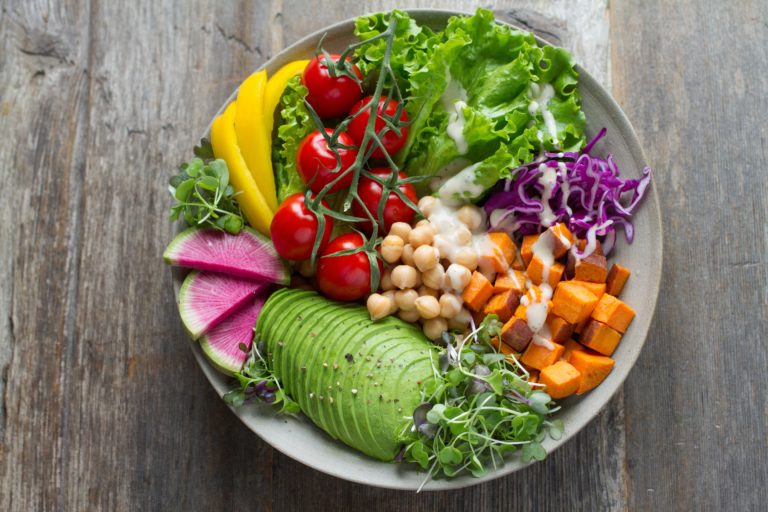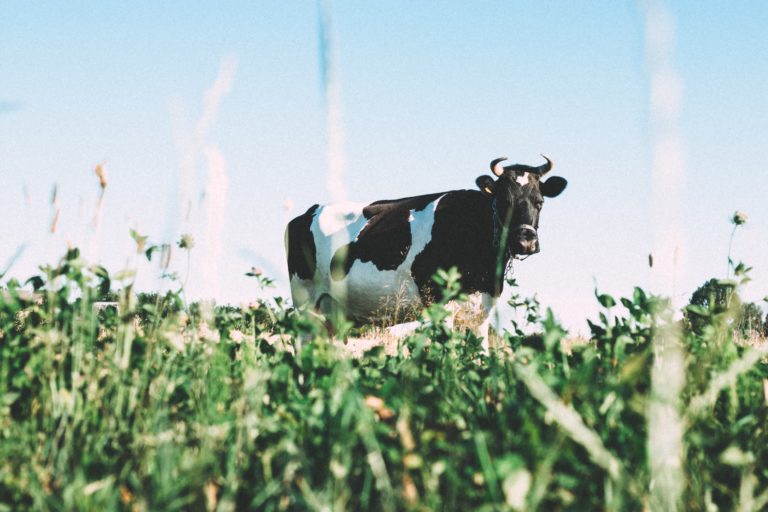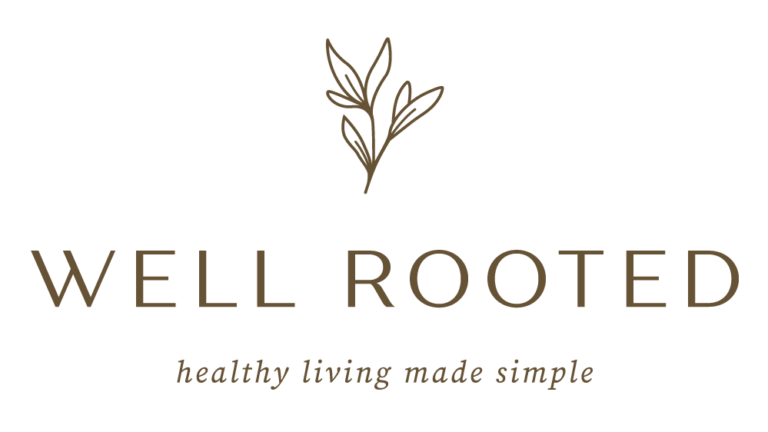How To Manage Histamine Intolerance + Seasonal Allergies
A couple of years ago histamine intolerance was something I didn’t know existed. After completing multiple elimination diets though, I developed all sorts of new symptoms. I was experiencing flares often and reacting to dozens of foods. I developed severe seasonal allergies and was often uncomfortable. Thanks to loads of research and connecting with knowledgeable professionals, I came to find this little known disorder. Histamine Intolerance symptoms can be frustrating and daunting, affecting multiple systems simultaneously. Episodes come on quickly and often without warning. With seasonal allergies on the rise, and thousands of people suffering with undiagnosed conditions, it begs the question. Could histamines be the cause of your health issues? This is How To Manage Histamine Intolerance + Seasonal Allergies.
As a reminder I am not a medical professional, please speak to your doctor before implementing any lifestyle changes. Read our disclaimer to learn more.
This post contains affiliate links. View our full disclosure.

WHAT IS HISTAMINE INTOLERANCE?
Histamines are chemicals created by our cells that respond to an allergen or trigger. Think of them as the first line of defense to fight an invader. When we come in contact with a trigger, our immune system sends a signal to our mast cells. These cells are found in our lungs, bone marrow, skin, nose, mouth, and digestive system. Mast cells store and release histamine in response, and blood is released to that area of the body. As inflammation kicks in, additional chemicals help heal the irritation.
Histamines are what can cause sneezing, itching, or watery eyes when we are exposed to pollen, dust, and pets. Another great example of a histamine response is a mosquito bite. Mast cells trigger increased blood flow causing inflammation. Plus, the bite swells and itches as histamine is released in our skin.
Additionally, histamines can activate numerous bodily systems including immune, neurological, gastrointestinal, and even the nervous systems. This explains why some people can experience multiple symptoms at once.
Although they are meant to protect us, histamines can quickly get out of control. When our body accumulates too much histamine, an intolerance occurs due to an imbalance. This can be attributed to various health conditions, more of which are outlined below. There is also such thing as histamine toxicity, which is often confused for an allergy to certain fish.
Furthermore, severe forms of histamine intolerance can develop from dysfunctions in mast cells. Mastocytosis is a condition where mast cells produce excess histamine, usually due to gene mutations. Then they build up in specific areas of the body. Mast Cell Activation Disorder is a debilitating disease where someone suffers from consistent anaphylactic attacks.
SEASONAL ALLERGIES
There is a direct link between histamines and seasonal allergies, which makes much of their treatment similar. In fact, there is a school of thought that seasonal allergies are actually varying levels of histamine intolerance.
We specifically address resources and management of histamine intolerance here, but the information will also help symptoms associated with seasonal allergies.
CONTRIBUTING FACTORS
Histamines can get kicked into overdrive from a number of different causes. Sometimes a combination of factors can affect our ability to manage histamine, or push us into a flare. Some of these contributions include:
- Gut Health – imbalance of gut bacteria, Small Intestinal Bacterial Overgrowth (SIBO), Leaky Gut, Inflammatory Bowel Disease, GERD, loss of histamine-specific enzymes, loss of oral tolerance
- Infections and disease – parasites, mold illness, Lyme disease, Epstein-Barr Virus (EBV), Autoimmune Disease, liver disease
- Chronic stress and stressful events
- Hormone and adrenal dysfunction
- Extreme temperature changes
- Sensitivity to seasonal allergens such as mold, pollen, and pet dander
- Nutritional deficiencies, especially Copper, Zinc, Vitamin C, B Vitamins, and Omega 3’s
- Prescription drugs – antibiotics, heart medications, anti-depressants, pain medications, blood pressure medications, steroids
- Over the counter medications – painkillers, allergy reducers, digestive aids
SYMPTOMS OF HISTAMINE INTOLERANCE
Symptoms vary greatly by person, and can change over time. Most people experience multiple symptoms simultaneously, and/or a gradual buildup of symptoms.
For example, upon initial contact with a trigger I experience seasonal allergy-like symptoms including congestion, itchy dry eyes, post nasal drip, and headaches. As the episode progresses I often develop heart palpitations, digestive disturbances, heightened anxiety, dizziness, and insomnia.
Here are a few more examples of common symptoms:
- Sleep issues – insomnia, trouble falling or staying asleep
- Digestive issues – change in bowel habits, nausea, gas, bloating, IBS, food allergies and intolerances
- Frequent urination
- Skin disorders – flushing, rashes, hives, acne
- Rapid heart rate
- Headaches and migraines
- Congestion, itchy, dry or watery eyes, itchy nose, sneezing, mucus
- Anxiety and panic attacks
- Brain fog
- Fatigue
- Exercise and temperature intolerance
- Low blood pressure
- Postural Orthostatic Tachycardia Syndrome (POTS) or frequent dizziness, especially when standing up
- Increased PMS, menstrual pain, and hormonal imbalance
CONFIRMING A DIAGNOSIS
Histamine intolerance is still a relatively new disorder, and easily misdiagnosed. Many traditional medicine doctors are not aware of the condition, or know how to treat it. This is when working with a functional or integrated medicine team really pays off.
Testing is not always accurate or readily available either, which leads to diagnosis by symptoms and process of elimination. There are however a few tests that most doctors can order to help view the bigger picture.
- Testing enzyme activity – a blood test can confirm if you are low in Diamine Oxide (DAO) or histamine-N-methyltransferase (HMNT), two key enzymes that break down histamine.
- Testing histamine blood levels – you can also request a standard test to monitor your blood histamine levels. Higher levels may indicate excess histamine in the body.
- Skin prick test – there is a relatively new test that consists of series of finger pricks, though it has mixed results.
- Related testing – testing for gastrointestinal disorders, nutrient deficiencies (specifically Copper, Zinc, Vitamin C, B Vitamins, and essential fatty acids), and overall inflammation are also helpful
MANAGING HISTAMINE INTOLERANCE
MONITORING THE HISTAMINE BUCKET
There is a term in the community that compares histamine threshold to a bucket. Every time you come in contact with a trigger, the bucket fills. Too many triggers, or a buildup of triggers over time, causes the bucket to overflow. When your threshold has been met, you may notice an onset of symptoms, or a worsening of symptoms. Relief is unlikely until your bucket has been emptied.
Just as symptoms are specific to the individual, so are triggers. Understanding yours is essential to managing this condition. It will take some practice, but using the lifestyle management suggestions below, you can build an individualized management plan.
LIFESTYLE ADJUSTMENTS
- Identify your triggers, and track them. Add notes in your phone or keep a journal. Pay attention to your body’s signals to identify how food and lifestyle factors affect you.
- Under the guidance of a practitioner or functional medicine doctor, try a low-histamine diet to see if your symptoms improve. This isn’t meant to be a long term plan, but help manage symptoms until the root cause is identified.
- Prepare food at home and avoid leftovers. The more food ripens the greater its histamine levels. Meat and seafood develop the highest histamines, especially when left at room temperature or in the refrigerator. Cooking does not eliminate histamines, but freezing does slow down the development.
- Eat the freshest food possible, including local and seasonal produce, flash-frozen wild salmon, and frozen grass-fed and pasture-raised meats.
- Be careful when dining out, and ask lots of questions. Unless a location uses extremely fresh animal protein, avoiding or reducing this can help reduce exposure.
- Pay attention to local pollen and allergen levels. When environmental allergens are high your histamine bucket will fill quickly.
HIGH HISTAMINE FOODS
Histamines are created by our cells, but they are also found in many foods. Eating high histamine foods can cause your bucket to overflow, or begin the onset of symptoms.
Personally, after following an elimination diet that was very high histamine, I developed an intolerance. I believe the restrictive diet altered my microbiome significantly, and I lost the ability to break down histamine.
The following foods contain a high amount of histamines:
- Leftovers
- Aged foods – cured, canned or smoked meats and seafood, cheeses, yogurt, sour cream, buttermilk, kefir
- Fermented foods – sauerkraut, kimchi, pickles, kombucha, soy, miso, sourdough bread, vinegar
- Alcohol – especially fermented products like wine, cider, beer and champagne
- Anything but extremely fresh protein
- Older seafood, especially shell fish, Tuna, Mackerel, Swordfish, Mahi Mahi
- Certain vegetables – avocado, spinach eggplant, and tomatoes
The following foods contain histamine liberators, that either encourage histamine release or block the enzyme that breaks down histamine:
- Citrus fruits – grapefruit, orange, lime, lemon, pineapple, papaya
- Bananas
- Strawberries
- Most nuts, especially cashews and walnuts
- Hot peppers and spices
- Legumes, beans, peanuts, and soy
- Cocoa, chocolate, and carob
- Alcohol
- Uncooked egg whites
- Black, green, and mate tea
- Certain spices – cinnamon, nutmeg, chili powder, hot peppers, curry
- Food additives – preservatives, stabilizers, and flavorings
HISTAMINE SUPPORTING FOODS
One of the biggest downfalls of a low histamine diet is the restriction. Based on my experiences with elimination diets, I know first hand how detrimental restriction can be. While reducing high histamine foods helps me manage my symptoms, I place equal weight on adding nutrient dense foods. Incorporating anti-inflammatory, high quality foods helps fuel our body and replenish any deficiencies.
The following foods are known or suspected to support our body’s ability to manage histamine. These foods are also full of antioxidants, which makes them an excellent addition to any diet. Below are some of these foods and their role in fighting histamine.
- Wild blueberries – these are one of the most nutritious foods on the planet
- Apples – high in Quercetin
- Arugula or rocket lettuce
- Watercress lettuce
- Parsley
- Celery
- Cucumber
- Brocoli
- Fennel – aids digestion
- Red onion – high in Quercetin
- Thyme
- Ginger
- Turmeric
- Spirulina and chlorella
- Tulsi Holy Basil
SUPPLEMENTATION
Supplements can be a great help with managing symptoms and maintaining a functional lifestyle. As always, consult with your practitioner or functional medicine doctor before beginning any new supplements. The following vitamins, minerals, and herbs have been shown to assist with histamine intolerance, and many I use personally as well.
Before purchasing a supplement brand, be sure the company is reputable and provides high quality bioavailable products. I personally love Seeking Health products, especially their line of Histamine supporting supplements. Learn more about these below.
- Buffered or liposomal Vitamin C, up to 2,000 mg daily – lowers histamine levels and boosts DAO
- Vitamin B6 and B12 – helps break down histamines
- Magnesium, up to 300 mg daily – helps the body manage stress and mitigate allergic response. (I like this pill version and this spray oil and use both interchangeably.)
- Zinc – assists DAO in breaking down histamine and boosts the immune system
- Calcium – to reduce swelling and hives
- DAO enzyme – to help break down histamine in the gut and aid in digesting histamine-rich foods
- Quercetin, Stinging Nettle, and Bromelain – Antioxidants to stabilize mast cells and reduce inflammation. (I use this HistamineX blend every day to manage my intolerance.)
- Histamine specific probiotic – unfortunately many lactobacillus strains actually increase histamine levels. However, the strains in this blend support histamine management.
EMERGENCY HISTAMINE INTERFERENCE
When I am having an abrupt and intense histamine flare, I rely on a few SOS techniques to help mitigate the symptoms. These include:
- Deep breathing. Stress is a big trigger for me, and can easily overflow my bucket. When I feel something coming on, I stop, close my eyes, and take deep breaths. Not only does this calm my mind, but it also calms my nervous system. Both of which helps reduce the severity of symptoms.
- Take electrolytes. Potassium, magnesium, and key minerals help lower histamine, and replenish depleted levels. Think of this electrolyte powder as a natural sugar-free quick-acting Gatorade.
- Sodium and Potassium Bicarbonate. This combo absorbs histamine and adjusts the pH level just enough to push levels back down in a manageable range. I like this blend from Klaire Labs.
- Make a histamine-fighting green juice. I find that eating heavy meals during a flare makes me feel worse. I lean more on easy to digest green smoothies and juices instead. These also have the benefit of providing a concentrated dose of nutrients. Find my anti histamine green juice blend here.
- Take an Epsom salt bath or hit the infrared sauna. I use a warm bath with 2 cups Epsom salt and 1/2 cup baking soda to quickly dump histamines. I also get the extra benefit of additional magnesium. The infrared sauna is equally effective and bonus that is also reduces inflammation.
- Drink histamine-fighting tea. I like to combine this with one of the above suggestions, to help tackle histamines from both sides. This brand is my favorite.
Additional resources
If you have already tried a low histamine diet without relief, or are aren’t seeing improvement with lifestyle factors, consider associated intolerances. Oxalate, salicylates, and sulfur are similar in nature and symptoms to histamines. Oxalates in particular are highly connected to histamine issues.
There are additional resources and readings I highly recommend as you embark on your histamine and seasonal allergy journey.
- All in one resources for all things histamine, including recipes, meal plans, and lifestyle management, look to Healing Histamine and Alison Vickery.
- Histamine food lists vary and everyone has their own opinions. This is a great collection of histamine food lists to reference. Keep in mind everyone’s tolerances vary, so you will want to test these for yourself.
- This comprehensive list of
- Read on for additional resources on diagnosing and distinguishing between histamine disorders.
- I love Dr. Ben Lynch’s Dirty Genes book to help support an overall healthier lifestyle, and target specific issues and symptoms. He also specifically addressed deficiencies with the DAO enzyme, which is suspected to be the main cause of histamine intolerance.
- For a very in-depth look at histamine intolerance and the science behind diagnosis, treatment, and co-infections, this is a great resource.









